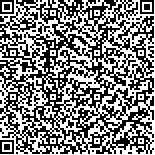|

二维码(扫一下试试看!) |
| 造纸法烟草薄片废水混凝预处理研究 |
| Coagulation-flocculation Treatment of Wastewater from Reconstituted Tobacco Sheet Manufacturing by Papermaking Process |
| 收稿日期: |
| DOI:10.11980/j.issn.0254-508X.2012.02.009 |
| 关键词: 造纸法烟草薄片废水 混凝 聚合氯化铝 聚合硫酸铁 聚丙烯酰胺 |
| Key Words:papermaking-reconstituted tobacco slice wastewater coagulation-flocculation polyaluminium chloride polyferric sulfate polyacrylamide |
| 基金项目:国家重点基础研究发展计划(973计划,2010CB732205)。 |
| 作者 | 单位 | | 王玉峰1,2,3 | 1.华南理工大学制浆造纸工程国家重点实验室,广东广州,510640;2.华南理工大学植物资源化学与化工联合实验室, 广东广州,510640;3.广东省东莞市质量监督检测中心国家纸制品质量监督检验中心,广东东莞,523080 | | 陈克复1,2 | 1.华南理工大学制浆造纸工程国家重点实验室,广东广州,510640;2.华南理工大学植物资源化学与化工联合实验室, 广东广州,510640 | | 莫立焕1,2 | 1.华南理工大学制浆造纸工程国家重点实验室,广东广州,510640;2.华南理工大学植物资源化学与化工联合实验室, 广东广州,510640 | | 周志明1,2 | 1.华南理工大学制浆造纸工程国家重点实验室,广东广州,510640;2.华南理工大学植物资源化学与化工联合实验室, 广东广州,510640 |
|
| 摘要点击次数: 5882 |
| 全文下载次数: 2246 |
| 摘要:以聚合氯化铝(PAC)和聚合硫酸铁(PFS)为混凝剂,4种不同类型的聚丙烯酰胺(PAM)为助凝剂,对造纸法烟草薄片废水进行混凝处理,分别考察了pH值、混凝剂用量、助凝剂用量对混凝效果的影响。结果表明,PAC与PFS对COD、氨氮和悬浮物(SS)去除率效果相当,但PAC的脱色效果更佳。相对分子质量700万、离子化度为15%的阳离子聚丙烯酰胺(PAM4)与PAC的复配体系具有最佳的混凝效果,在pH值为6.5、PAC用量为500 mg/L、PAM4用量为5 mg/L的优化工艺条件下,COD、氨氮、色度和SS去除率分别为70.8%、84.8%、72.3%和98.5%。废水的铝含量分析表明,该体系非但没有产生残留铝,而且大幅去除了原水中的铝。处理后废水的紫外吸收光谱表明,有机物含量降低。 |
| Abstract:The coagulation-flocculation method was used for the treatment of waste water from reconstituted tobacco sheet manufacturing by papermaking process. polyaluminum chloride (PAC) and polyferric sulfate (PFS) were used as coagulants, four kinds of polyacrylamide were used as coagulant aids. The effects of three factors, i.e. the dosage of coagulants, the dosage of coagulant aids and pH on the treatment efficiency were evaluated. The efficiencies of PAC and PFS on COD removal, ammonia nitrogen removal and suspended solids (SS) removal were similar, but the efficiency of PAC on color removal was obviously higher. Cationic polyacrylamide PAM4 with very high molecular weight and low charge density coupled with PAC was found to give the highest coagulation-flocculation efficiency. At the optimum pH of 6.5, the optimum PAC dosage of 500 mg/L, and the optimum PAM4 dosage of 5 mg/L, COD removal was found to be 70.8%, ammonia nitrogen removal was 84.8%, color removal was 72.3%, and SS removal was 98.5%. The PAC-PAM4 system did not result in residual aluminum production, contrarily, and removed most of aluminum in the effluent. UV absorption spectra of treated wastewater showed that organic matter had been significantly removed. |
| 查看全文 HTML 查看/发表评论 下载PDF阅读器 |
|
|
|